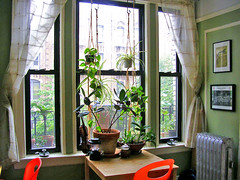Clean it With Renew Crew!
Conventional wisdom would have us all believe that pressure washing is one of the most efficient cleaning methods for any kind of surface. By literally blasting away dirt and grime, pressure washing should be able to leave your decks, patios and exterior walls looking spotless and good as new. That’s what many people believe anyway, but the truth is that while pressure cleaning can be effective, many situations call for a little bit more.
Pressure cleaning may be able to get rid of the dirt on a solid surface, but it may also leave deeply embedded dirt untouched. At first, most of the dirt and grime that gets embedded into patios and decks may be unnoticeable, but it will build up in time, and if you go years without a thorough cleaning it will look like almost nothing will get rid of it. Fortunately, there are solutions available from Renew Crew. Renew Crew combines pressure washing with its own exclusive solvents that can penetrate deep into the pores of a surface. These solvents loosen embedded dirt that can then be removed with pressure washing.
An Environmentally-Friendly Solution
Those who are worried about the potentially harmful chemicals found in many deep cleaning solvents need not worry when they hire Renew Crew to clean their surfaces. Renew Crew’s solvents utilize environmentally-friendly enzymes that can kill mold and mildew without killing your plants, bleaching your wood or endangering your family or pets. Our solvents also contain special polymers that can seal your surfaces and protect them against the elements. This will extend the life of your concrete patio or wooden deck so that it can be enjoyed by you and your family for years.
Most commercial pressure washing services cannot provide the kind of thorough and superior concrete cleaning and deck sealing that you will get from Renew Crew. Our exclusive solvents and sealants aren’t available in any store, but a simple pressure washing appointment will give you access to products that were developed and refined specifically for Renew Crew.
For more information about the services offered by Renew Crew or to schedule a cleaning, contact us online at www.renewcrewclean.com today.



















